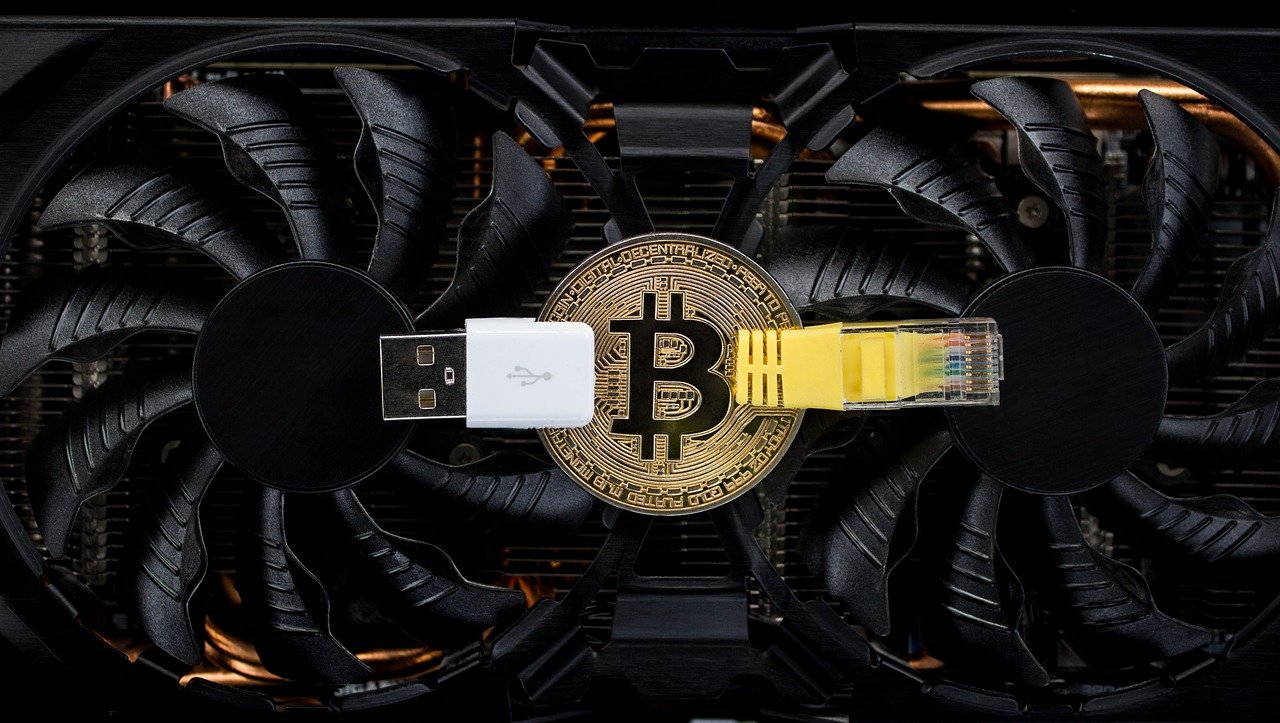In episode nine of the Uncensored Crypto docuseries, Michael Hearne sits down with crypto experts to discuss cryptocurrency mining and its energy consumption. Topics covered include whether Bitcoin mining is worth it for anyone aside from large companies, the energy consumption of mining, creative ways that energy waste from crypto mining can be used, and renewable energy in mining.

The docuseries as a whole discusses how censorship is used to hide the benefits of cryptocurrency, DeFi, and decentralized systems from people looking for digital sovereignty and financial freedom. It also covers how crypto has the potential to completely change the traditional centralized systems as we currently know them.
But the ninth episode takes a step back and focuses on an important aspect of cryptocurrency: how it’s created and how mining could have some key benefits for the economy, improve our energy efficiency, and actually increase the development of renewable energy.
Recap of topics covered in episode 9 of the Uncensored Crypto docuseries
Accessibility of crypto mining
“There’s a lot of incentives to mine Ethereum. And I get it that you can just make the argument of like, oh, well the pools make it decentralized. But honestly the fact that it’s the barrier to entry is one graphics card. One kid in his dorm room can support the network right now. Whereas, Bitcoin mining to run an S9, which is still going to be like four or five hundred bucks in today’s market, which is old gen equipment […] And so you really are starting to see this world where it’s like, if you want a Bitcoin mine, it’s for the wealthy or public traded companies or institutional money.” – Daniel Conover
One worry in crypto mining, particularly when it comes to Bitcoin, is that only large mining companies stand to have any profitability and that individuals or smaller organizations cannot compete.
This is because larger companies can purchase better quality equipment and more mining rigs, which gives them a higher chance of solving the mathematical equations needed to verify the blockchain. When they solve an equation, they can distribute the earnings to all the miners in the company.
This means that a miner who joins a company or pool has a better chance of making a profit than working on their own. However, the docuseries examines the downside to this. If there are no individual miners or small organizations, then mining becomes centralized in a small number of larger companies.
When it comes to verifying the blockchain, it’s better for there to be many different miners so the system remains as decentralized as possible.
Energy waste from crypto mining
 “Crypto mining has a dirty reputation in terms of its utilization of energy, and one of the things that I really enjoy about what we do is we help people take that power that goes into these crypto mines and find alternative applications for the heat […] For me, those are the types of applications that are exciting. We have people heating their homes, heating their pools. We have customers up in Scandinavia that are heating the sidewalks of their towns in an effort to prevent the use of salt and carbon in order to clear that snow.” – Gary Testa
“Crypto mining has a dirty reputation in terms of its utilization of energy, and one of the things that I really enjoy about what we do is we help people take that power that goes into these crypto mines and find alternative applications for the heat […] For me, those are the types of applications that are exciting. We have people heating their homes, heating their pools. We have customers up in Scandinavia that are heating the sidewalks of their towns in an effort to prevent the use of salt and carbon in order to clear that snow.” – Gary Testa
The Uncensored Crypto docuseries explores the unique ways that some businesses are using energy waste from crypto mining. Crypto mining rigs produce a lot of energy because they are constantly running 24/7.
This energy is in the form of heat, which is typically just wasted, adding to mining’s reputation as energy inefficient. As crypto mining becomes a bigger industry, miners have begun finding ways to use this heat to offset the emissions.
The heat can be harnessed and applied to other industries, like heating greenhouses, homes, water, and food production. This ensures no energy is wasted and also benefits miners by giving them another stream of income to profit from.
Mining energy consumption
“In the US, we generate four terawatt hours of electricity. We lose 200 to 300 gigawatts of electricity per hour just through friction in the transmission lines. All of the Bitcoin miners in the US use less than 200 gigawatts of electricity. So we’re just using energy that otherwise would be wasted. Over time, Bitcoin mining becomes more and more energy efficient. The machines we use today are twice as efficient as the machines that people were using five years ago. And in five years, machines will be twice as efficient as they are today.” – Fred Thiel
Crypto mining has a reputation for consuming large amounts of energy. Indeed, this is a big reason why it’s not possible for any individual to just start mining in their home. The cost of electricity for running your rig 24/7 can quickly get too expensive.
However, the Uncensored Crypto docuseries makes the case that mining may not consume as much energy as most people think and not much more than is already wasted in regular energy production.
For this reason, some view mining as a key way to stop energy waste. In addition, some crypto experts view Bitcoin and other coins as a store of energy. This is because when electricity is produced, it must be either consumed or stored somewhere. So any excess electricity that power companies are unable to sell can be used for miners.
Renewable energy and crypto mining
 “If you think about Bitcoin as like an energy battery where you translate electrical energy into financial energy, and then you can transact that across time and space, that is going to lead to a whole bunch of innovations that are actually going to accelerate the transition to renewable energy-based infrastructure.” – Alex Brammar
“If you think about Bitcoin as like an energy battery where you translate electrical energy into financial energy, and then you can transact that across time and space, that is going to lead to a whole bunch of innovations that are actually going to accelerate the transition to renewable energy-based infrastructure.” – Alex Brammar
A constant critique of mining proof-of-work systems is how bad they are for the environment. This has led to more proof-of-stake blockchain technologies, such as Cardano, which emphasize being more environmentally sustainable. Even Ethereum is moving to a proof-of-stake system for this reason, among others.
However, the Uncensored Crypto docuseries argues that crypto mining doesn’t have to be a drain on the environment. In fact, it can complement renewable energy and even accelerate its adoption.
Many mining organizations have partnered with renewable energy companies to work towards sustainable solutions. This includes finding ways to use solar, wind, geothermal, and hydropower energy for mining.
What does the future look like for mining and energy consumption?
Future of crypto mining
Mining Bitcoin has become increasingly difficult due to several factors such as the coin’s hash rate, its halving event every four years, and the cost of equipment and electricity.
Despite this, many corporations haven’t been dissuaded from setting up large mining operations, and many crypto experts still view crypto mining as a profitable industry.
First, as mentioned in the Uncensored Crypto docuseries, the future of crypto mining is with larger mining pools or organizations that can combine their resources. It’s nearly impossible for a single individual to successfully mine on their own. And given Bitcoin’s halving event every four years, the current reward for mining will be cut in half in 2024.
Miners must find top-of-the-line mining equipment, which can cost up to tens of thousands of dollars. They must also make sure the cost of electricity is something they’ll be able to afford.
After Bitcoin’s explosive price growth in 2021, many new mining operations have been set up worldwide. Most notably, after El Salvador made Bitcoin official currency, they announced plans for a Bitcoin mining city.
The docuseries shows that Bitcoin mining is still profitable, though it has come a long way from the early days and developed into a large industry.
Many experts believe the future of crypto mining lies in finding sustainable, renewable energy sources, which is a problem many cryptocurrency and energy companies are currently trying to solve.
Future of renewable energy in mining
In early 2021, Tesla announced it would start accepting Bitcoin as payment. But only a few months later they decided to stop, citing Bitcoin’s fossil fuel consumption and impact on the environment. In late-2021, Iran decided to ban Bitcoin mining in an effort to conserve electricity.
However, Bitcoin remains the most popular choice for institutional adoption by different countries, despite its impact on the environment. As shown in the docuseries, many governments and corporations are making strides to offset their emissions by relying more on renewable energy.
For example, El Salvador’s Bitcoin City is powered by the natural geothermal energy of a nearby volcano. And they weren’t the first to think of this– crypto mining operations have been set up in Iceland that also use natural geothermal energy.
The crypto community is also well aware of the problem. Organizations like the Crypto Climate Accord and Square’s Bitcoin Clean Energy Initiative were created to help the crypto and blockchain industries reduce their carbon footprint. Their goal is to shift cryptocurrency towards renewable energy.
Many Bitcoin miners are looking to partner with renewable energy companies in the hopes that this will help Bitcoin be accepted as legal tender.
For example, energy technology company Lancium announced they were spending $2.4 billion to build a renewable energy-powered data center facility dedicated to Bitcoin mining. And another mining operation in South Carolina claims to be 92% carbon neutral.
About the Author

Michael Hearne
About Decentral Publishing
Decentral Publishing is dedicated to producing content through our blog, eBooks, and docu-series to help our readers deepen their knowledge of cryptocurrency and related topics. Do you have a fresh perspective or any other topics worth discussing? Keep the conversation going with us online at: Facebook, Twitter, Instagram, and LinkedIn.


